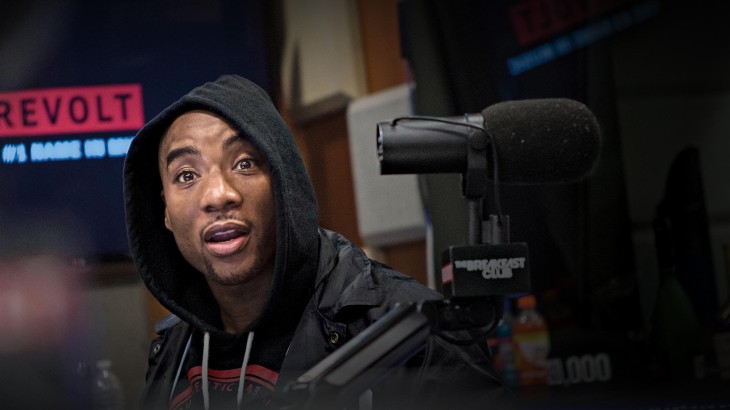Charlamagne Tha God, radio presenter at New York’s Power 105.1, is known for his vocal opinions and in-depth interviews. While he typically looks toward his guests and their careers, speaking alongside Pharrell Williams today he looked back on his own, and sure enough his opinion on radio is worth talking about.
In the video below (at 38 min), Charlamagne says, “[radio] can amplify voices, but I don’t know if we [radio] can necessarily create them anymore.” Pharrell’s solution was to “turn them up”, but obviously that metaphor doesn’t make much sense, realistically. Major radio stations with huge competition are not going to take risks like that when it comes to new artists who they cannot bank on.
Although we lack the immense choices that US radio networks provide, Australia is lucky to have a fairly diverse radio landscape. In turn, perhaps unlike the USA, we’re also lucky in that less options means more people are listening to any one station – some of which still have the capacity to find new artists.
To be clear, this discussion is focusing on Australia, where radio is markedly different to the USA. Referring specifically to Charlamagne’s show and Power 105.1, we definitely don’t have such a strong, dedicated hip-hop presence.
At the top of the heap obviously lies the commercial stations who play Top 40 stuff. They don’t break artists and frankly they’re not expected to. But we also have triple j in the middle, and for better or worse, triple j remains to be the unopposed leader for the demographic of anybody reading this article, and many thousands more. In addition are regional community radio stations like FBi, 3RRR and 4ZZZ, who focus heavily on diverse, upcoming local talent.
For the most part, Charlamagne is totally right. Firstly, there are countless ways to discover music and for artists to break out in 2016 – radio is not as crucial as it once was. Not only are there plenty of podcasts, digital radio programs and playlists to follow in lieu of traditional radio, there are blogs, publications, streaming services, SoundCloud and countless more ways to discover music.
However, in the case of a station like triple j, who are lucky to be the definitive non-commercial national radio station, they can and do break artists to the masses – just not very often.
It’s true that most radio no longer discovers voices – that happens before it gets on air. Not only are there countless ways to find music, there are countless artists. For an artist to earn an add to radio rotation, they have to seriously stand out (or fit in, if you’re the ‘glass half empty’ type.) In the case of a triple j-level station, this almost always means building online hype first. It’s the internet that discovers them, while radio plucks them out and up into the spotlight.
Stations like FBi are more open to playing totally unknown artists, although you could argue that an artist usually still needs to graduate to a station with a wider audience to be truly created or broken.
We’re lucky to have wonderful platforms like triple j Unearthed, specifically designed to discover completely unknown artists, and to filter through to radio. As such, the occasional artist does still break on triple j – Flume, Courtney Barnett, Big Scary, Sampa the Great, Montaigne, Seekae, Remi and Gang of Youths are just some of many hundreds of examples.
Say what you will about triple j, but Australian radio does still have the capacity to discover artists and create voices. It’s just far, far less common and more difficult.
Although Charlamagne is also only talking about artists at an extremely high level of success, and widely commercial radio stations, it is nevertheless refreshing to hear this level of honesty from someone in his position. But this argument cannot be said definitely for all radio. The musical underground is bigger and better than ever, and sometimes – not often, but sometimes, radio still plays a very important role.
Image: Vulture

